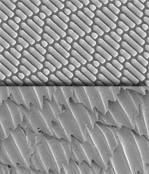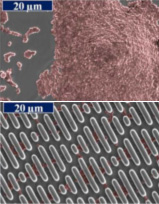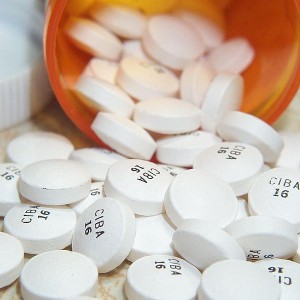In our fight to eradicate infectious disease and through the rigorous use of antimicrobial agents, our medical practices have inadvertently created new strains of heavily drug resistant bacteria or super bugs. What is the most concerning aspect of this superbug development, however, is that the root cause isn’t poor sanitation on the part of the patients or hospitals but the misuse and overuse of antibiotics and disinfectant. This brings to light a new question, should we really be inhibiting the spread of pathogens (and in turn drug resistance) by prescribing even more antibiotics? Or is there another simpler solution, where their growth is limited non-chemically?

- Figure 2: Sharklet vs. sharkskin Source Sharklet Technologies: http://sharklet.com/wp-content/uploads/2010/02/compare-photo.gif
That was the realization that researchers happened upon through their observations of none other than sharks. They were able to determine that a shark’s skin not only possesses hydrodynamic qualities but antimicrobial properties as well. Yet what is so intriguing about this discovery is that a shark’s bacterially resistant exterior was due only to its skin’s microscopic shape and texture, and not to any sort of chemical reagents found on the skin. A shark’s skin consists of something known as dermal denticles (second image in Figure 2), which are a miniscule network of diamond shaped scales. The riblets found on these scales as well as their spatial arrangements are what discourages microbial habitation, making shark’s skin a non-chemical bacterial growth inhibitor. Following this research, scientists proceeded to synthetically replicate sheets of these dermal denticles, eventually creating a product known today as Sharklet (first image in Figure 2).

- Figure 3: Flat vs dentricle surface adhesion
- Source Sharklet Technologies: http://sharklet.com/wp-content/uploads/2010/02/img-research-results.jpg
Sharklet makes use of a diamond shaped (dentricle) pattern of riblets, each one measuring to approximately 20 micrometers in length, to create a disruptive surface that discourages biofilm formation (colonized bacterial cell growth). It does so by possessing a surface on which bacteria must use great amounts of energy to successfully adhere and reproduce. This high stress environment does not encourage bacteria to take up residence, causing them to dissociate to either colonize a more favourable environment or perish. After much initial testing, Sharklet has been shown to greatly reduce bacterial bioadhesion and growth in comparison to non-dermicle (eg. flat) surfaces, making it a viable option for device and surface coverings that are frequently handled in hospital environments.
Granted, Sharklet should not be seen as a cure to a patient’s bacterial infection but rather as a method to reduce the spread and transmission of bacteria. This reduction would correlate to a decrease in the amounts of infected individuals, which in turn would lessen the overall use of antibiotics and disinfectants, giving bacteria less of an opportunity to develop antibiotic resistance.
-Natasha Smyrnis
References: Sharklet Science, Antibiotic Resistance in the 21st Centuary: A Clinical Super-Challenge, Dr. Anthony Brennan: Sharklet Founder



